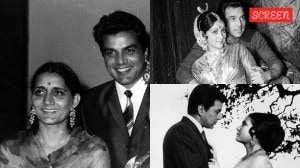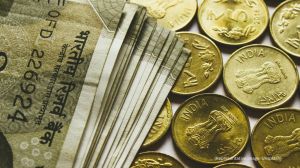Dolby establishes prominent DTH footprint
The audio services company has tied up with three of seven direct-to-home companies in the country.
The audio services company has tied up with three of seven direct-to-home companies in the country
Jason Power is in love with India. He keeps coming back to the country and says he has not had enough of it. This time,he is around to track the growing digital television subscribers in the country and map out a way to reach out to them via his audio services company Dolby. We have been in the movie production arena for a long time and have been looking at other screens like mobile,computers and broadcast for a while now. The push towards broadcast in India is part of that plan, Power told Screen.
Power,who is the senior director of Dolbys broadcast division and is based out of Dolby Laboratories headquarters at San Francisco,is pleased with the way things are shaping up in the country. A UK native,he has closely watched Europe switch over to digital television in under a decade and is hoping India follows the same model. Over the past couple of years,the broadcast industry here has shown tremendous potential. Keeping this in mind,we have been increasing our footprint in the country and are constantly adding staff on our rolls to keep up with the pace of the industry here. There is so much competition amongst the players here. We love it, he beamed. The $720 million NYSE listed company first established its presence in the country in August 2009 and has set up an office at Mumbai,the hub of the countrys media and entertainment industry.
Dolby currently has a tie-up with three DTH companies in the country viz.,Sun Direct DTH,Airtel Digital TV and Tata Sky. Dolby wants to replicate the surround sound experience that it gave theatre-goers for over three decades to the television screen. The recent rise in number of HD connections is expected to significantly realise the companys stated objective.
Dolby,amongst others,has been training professionals in the field across the broadcast spectrum on how to adopt to the HD format. While only a few channels (National Geographic,Discovery) are currently equipped with the technology,the number of local channels adopting the format is set to rise in the coming months. Dish TV is currently running a campaign wherein its subscribers can avail 30 HD channels including local Hindi channels like Sony and Colors and regional channels like Zee Kannada,Zee Bangla and Zee Talkies. Local content is an important factor in India. The consumer looks forward to such content on a high definition scale. We are enabling this transition in India currently, Power said.
The transition to different screens while keeping up with the quality of the content is a major challenge for the company. To counter this,Dolby has created an array of encoders and metadata programs. These include Dolby E,the companys premier digital audio technology used to distribute multichannel audio,Dolby Digital that is a worldwide format for film,broadcast and packaged media,Dolby Digital Plus that was developed as a next generation audio codec that offered flexibility and scalability to its surround sound channels and aacPlus that is used to lower the bandwidth of content by offering low-bit-rate audio coding. We want to make the media experience device agnostic. There are challenges but we are working around it constantly, Power said.
Dolby has also tied up with brands such as LG,Samsung,Nokia etc. to drive its mobile business. Considering that there are about 700 million subscribers on mobile,it is curious to see Dolby focusing so hard on the broadcast sector that currently has about 30 million users. Power,however,thinks the number is good enough and the DTH business will become highly scaleable over the next few years. The Indian government has stated its plans to digitise the television industry. This will drive up the number of subscribers on the DTH platform considerably. HD systems are also becoming cheaper and efficient even as TV sizes grow larger. Almost 70 per cent of televisions will be flat panelled over the next three years. We are quite confident of achieving success on this platform, he said.
Power also believes that usage patterns are changing in the Indian milieu and it is important to be in the space while this change is currently underway. We are working at multiple stages with the broadcast industry. There are a few skills and confidence issues rather than technology issues that we are addressing. The shift to digital TV is also encouraging because entertainment is woven into the Indian culture. Filmstars are everywhere from billboards to advertisements. Its quite unlike Europe which is very interesting for us, Power said.
He should know. Power has seen Europe embrace satellite television soon after the Athens Summer Olympics was broadcast in 2004 in surround sound. In a matter of months,we saw a quick transition to digital TV. Nascar,F1 races and US Golf tournaments were good drivers to push the new technology in US as well. We have seen that sporting events have been good drivers to popularise a new technology in Europe and are hoping the same is true of India, Power said. The ongoing ICC Cricket World Cup has sent DTH companies in a tizzy with Tata Sky,Reliance Digital TV and Airtel Digital TV showcasing the mega sporting event in HD. We have seen that 20 per cent subscribers from metros opt for HD connections ever since we launched Dolby 7.1 on our set-top-boxes, an official spokesperson from Airtel Digital TV said.
Little wonder then that Power is content with what the company has achieved in the country. We are really pleased with what we have achieved so far. It is more than what we had dreamed was possible, he says,signing off.



- 01
- 02
- 03
- 04
- 05




























